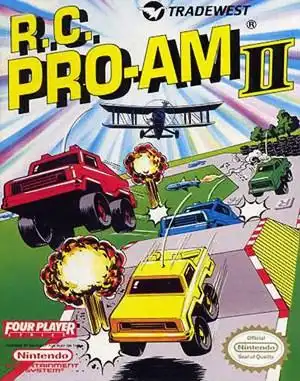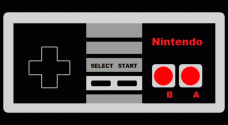Remember firing up your Nintendo Entertainment System, the familiar grey box humming to life? Among the countless cartridges, there was one that offered a unique perspective on racing: R.C. Pro-Am. But while the original laid the groundwork, its sequel, R.C. Pro-Am II, truly refined the formula, becoming a beloved classic for many retro gamers. Developed by the wizards at Rare and published by Tradewest in the early '90s, this isometric racer took everything you liked about the first game and cranked it up a notch.
Let's take a spin around the track and see why R.C. Pro-Am II still holds a special place in the hearts of those who grew up with the NES.
Evolution of the Race: From Trophies to Cold Hard Cash
One of the biggest shifts from the first Pro-Am was the progression system. Gone were the days of needing specific trophies to advance. In R.C. Pro-Am II, it was all about points and, more importantly, cash. Finishing in the top three (out of four competitors) earned you points towards overall ranking and crucial money. This meant you could keep racing and earning even if you weren't always in first place, providing a less frustrating path forward.
This cash system wasn't just for show; it was the engine driving your success.
Gearing Up for Glory: The Upgrade System
Unlike the random part drops of the first game, R.C. Pro-Am II introduced a proper shop between races. This is where your hard-earned cash came into play. You could strategically buy:
- Motors: Essential for increasing your top speed and keeping pace with faster opponents.
- Tires: Improved handling, making those tricky isometric turns much smoother.
- Weapons & Items: Missiles, bombs, the new freeze beam, buckshots (for collecting cash!), and the ever-useful nitro boosts.
This allowed for actual strategy. Do you upgrade speed to pull ahead, or handling to navigate hazards better? Stock up on weapons, or save for that next motor upgrade? This added depth kept the gameplay fresh.
Tracks Less Traveled (and More Varied!)
While the original Pro-Am tracks could feel a bit samey, R.C. Pro-Am II significantly upped its game in track design. We got to race across three distinct environments:
- Country: Classic tracks, often with jumps and water hazards.
- City: Navigating tight corners and urban obstacles.
- Off-Road: Bumpy terrain and different challenges.
The addition of hills and ramps wasn't just cosmetic; they were strategic points where nitro boosts could help you leap over obstacles or gain an advantage. Collecting the letters for "PRO AM II" on the track also gave you an edge, allowing you to upgrade before the computer did (though they could still collect their own letters).
The AI Challenge (and Yes, the Rubberband)
Let's be honest, the AI in the original R.C. Pro-Am could be a bit... relentless. R.C. Pro-Am II still featured rubberband AI – meaning opponents would often catch up if you pulled too far ahead – but it felt less punishing. You could actually build and maintain a lead to some extent, requiring precision driving, especially on later tracks, rather than feeling constantly swarmed. While not perfect, it was a noticeable improvement that made the single-player mode more enjoyable.
Multiplayer Mayhem: The Real Star
While the single-player was solid, the absolute highlight of R.C. Pro-Am II, and what cemented its legendary status for many, was the multiplayer. With the NES Satellite or Four Score adapter, you could get up to four players battling it out on the same screen.
This wasn't just racing; it was pure, chaotic fun. Launching missiles at your buddy just before the finish line, strategically using a freeze beam to stop an opponent on a ramp, or snagging that last dollar bill with buckshot – these were the moments that created lasting memories and friendly rivalries. The multiplayer alone made R.C. Pro-Am II worth the price of admission back in the day.
How Does it Hold Up Today?
Graphically and sonically, it's a product of its time – simple sprites and catchy, repetitive tunes (some recycled from the first game). Some reviews at the time noted the dated visuals and sound. However, the core gameplay loop – the strategic upgrades, the varied tracks, and the tight isometric controls – still feels good. The difficulty can still spike thanks to hazards and the AI, but mastering the controls and upgrade system is rewarding.
And that multiplayer? It's just as fun today as it was 30 years ago, provided you can gather some friends and the right setup.
Finding R.C. Pro-Am II Now
Want to relive the glory days or experience this classic for the first time?
- Rare Replay (Xbox One/Series X|S): This fantastic collection includes R.C. Pro-Am II, offering a convenient way to play on modern hardware (though multiplayer might be limited compared to the original setup).
- Original Cartridge: Track down an original NES cart. Be aware you'll need the console and a multiplayer adapter for the full 4-player experience.
- Modern Re-releases: Companies like Retro-Bit and Limited Run Games have recently produced new physical cartridges, often in collector's editions, compatible with original NES hardware and many clone consoles. This is a great option for collectors or those who want a brand-new way to play on classic systems.
R.C. Pro-Am II wasn't just a sequel; it was a significant improvement that polished the original's concepts into a genuinely great NES game. Its strategic depth, varied tracks, and legendary multiplayer solidified its place as a must-play racing game from the 8-bit era. If you missed it back then, or just want to revisit a classic, it's well worth seeking out.
R.C. Pro-Am II FAQ
What console was R.C. Pro-Am II released on?
R.C. Pro-Am II was released on the Nintendo Entertainment System (NES).
Who developed R.C. Pro-Am II?
The game was developed by Rare Ltd.
Does R.C. Pro-Am II have multiplayer?
Yes, R.C. Pro-Am II supports up to four players with the use of a multiplayer adapter like the NES Satellite or Four Score.
How is R.C. Pro-Am II different from the first game?
Key differences include a cash and points progression system (instead of trophies), a dedicated shop for buying upgrades and weapons, more varied track environments and designs, and slightly improved AI (though still featuring rubberbanding).


